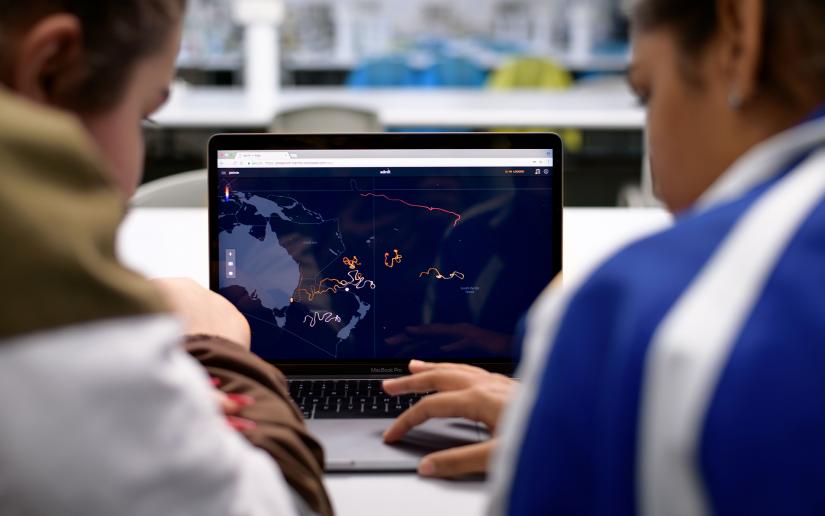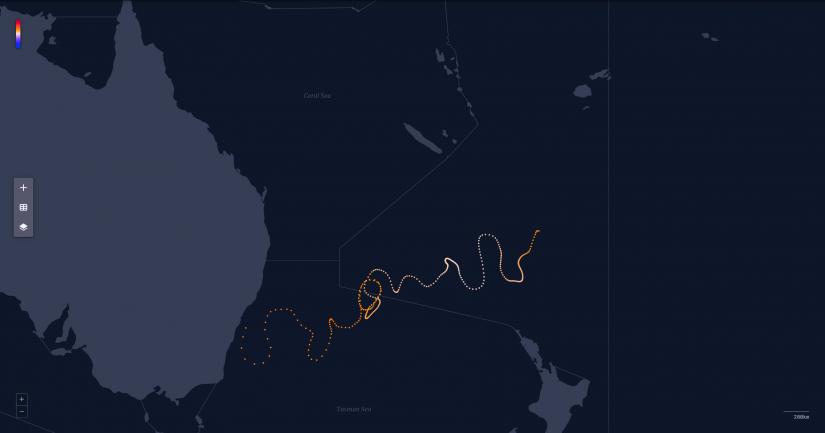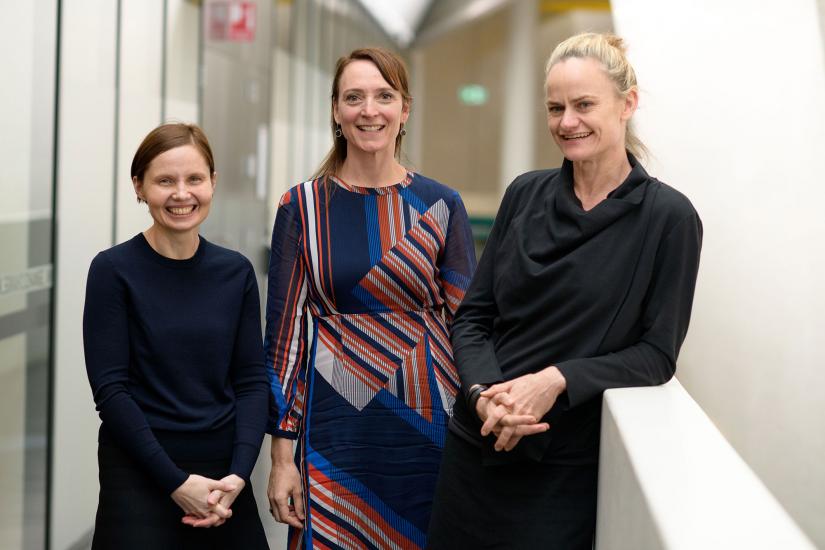Adrift, an online citizen science project, connects the public to the conditions of microscopic marine microbes as they are propelled around the globe by ocean currents.

High school students at the UTS Girls in STEM workshop in May were some of the first to explore Adrift. Photo: David Lawrey.
The picture of how climate change is impacting our ocean is often told via its larger inhabitants: scrawny polar bears, bleached coral, dwindling catch in fishing nets. But, just as importantly, microscopic marine organisms play an essential role in our biosphere.
Not only do marine microbes form the foundational building blocks of the underwater food-web, but it’s estimated that marine microbes consume almost 50% of the Earth’s carbon dioxide through the process of photosynthesis.
Invisible to the naked eye, the health and movement of marine microbes that drift as part of the plankton is difficult to picture even for scientists – let alone everyday citizens.
This challenge, to visualise the range of conditions that drifting marine microbes encounter, brought a group of expert scientists and visual designers from UTS together on a path to create the online citizen science project Adrift.
Adrift is a portal that connects the public with the lives of microscopic marine microbes as they are propelled around the globe by ocean currents, with temperature and nutrient availability changing along the way.
Lead researcher and biological oceanographer Professor Martina Doblin from the University of Technology Sydney, says Adrift is designed to engage a diversity of participants, including those who may not have technical or scientific expertise.
“We want to give people a view of what conditions microbes experience in different parts of the ocean, to provide clues about their capacity to adapt to the relatively fast pace of human-induced changes in ocean conditions.
“So, as they’re drifting in different surface currents, microbes experience diverse conditions along their paths.
“Scientists can’t be in the ocean to look at the plankton in all these places, so we have created a method to visualise their experience based on ocean simulations,” says Doblin.

A screen grab from Adrift, showing a virtual marine microbe journey. The change in colour indicates temperature variation.
Doblin says that the collaborative aspect of the project – which includes data visualisation experts Professor Kate Sweetapple and Dr Jacquie Lorber Kasunic from the UTS Design School, and Nancy Longnecker, Professor of Science Communication at Otago University in New Zealand – was essential to the success of Adrift.

UTS Adrift researchers (left to right), Dr Jacquie Lorber Kasunic, Prof. Martina Doblin and Prof. Kate Sweetapple. Photo: David Lawrey.
“Adrift allows citizen scientists to virtually 'drop’ microbes into the global ocean.
“The data produced by participants includes the geographic path travelled, and variations in temperature and nutrients experienced by the microbes.”
Using visual tools participants can learn about, map and record these variations, enabling researchers to identify areas of the ocean where real-life microbes are experiencing the most extreme changes along their drift paths.
“It’s a great entry point for students and citizens to get involved and begin to understand the challenges of living in the ocean today,” says Sweetapple.
Adrift is funded by the Inspiring Australia, Science Engagement Scheme, (Department of Innovation Industry and Science). Project partners are the Australian Bureau of Meteorology and the Integrated Marine Observing System (IMOS).

